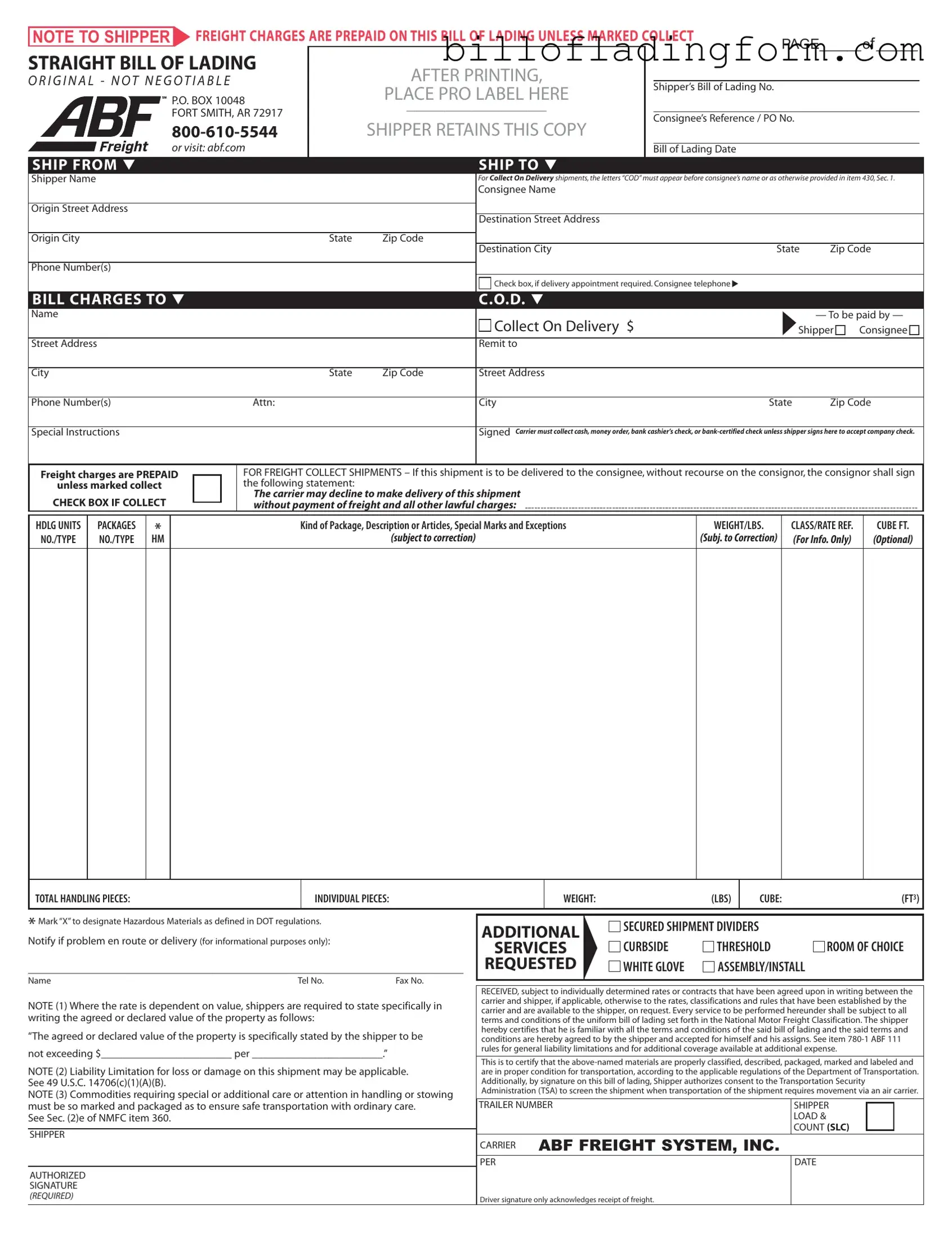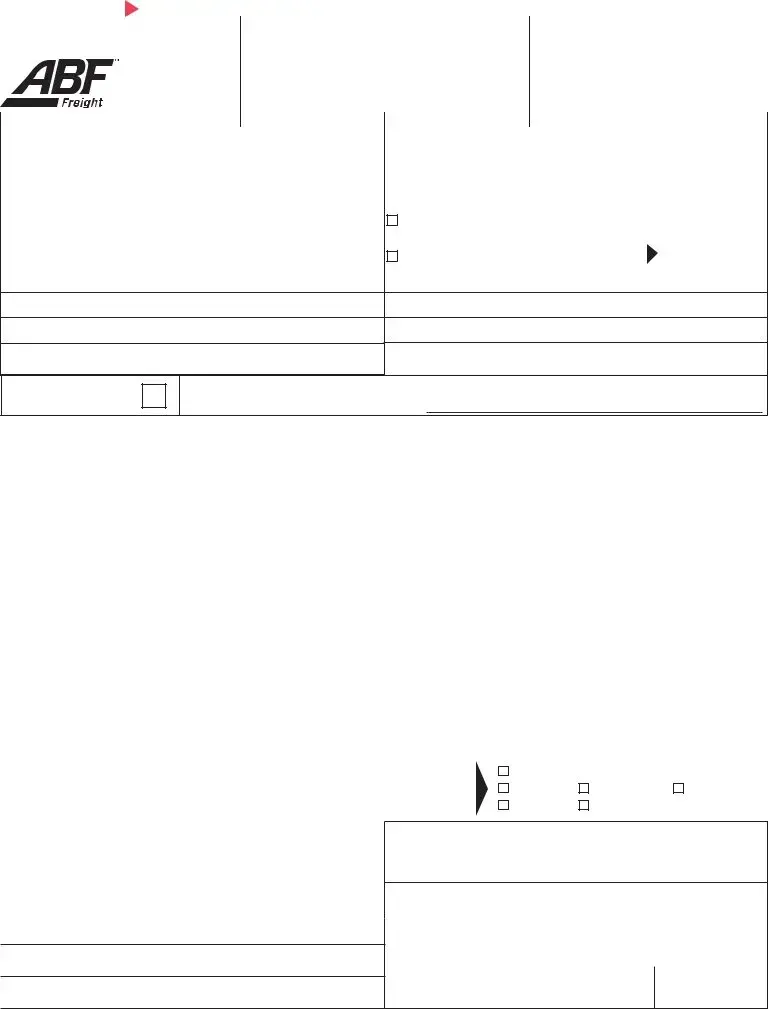Fill Out a Valid Abf Freight Bill Of Lading Template
The ABF Freight Bill of Lading form is a crucial document used in the shipping industry. It serves as a receipt for goods being transported and outlines the terms of the shipment. Properly filling out this form ensures that both the shipper and the consignee are clear on their responsibilities and the details of the shipment.
Ready to complete your ABF Freight Bill of Lading? Click the button below to get started.
Fill Out Your Abf Freight Bill Of Lading Online

